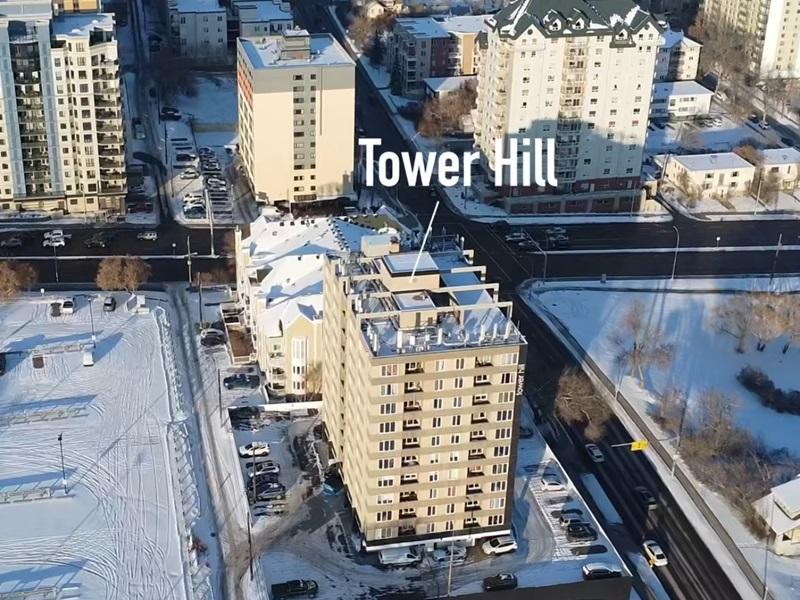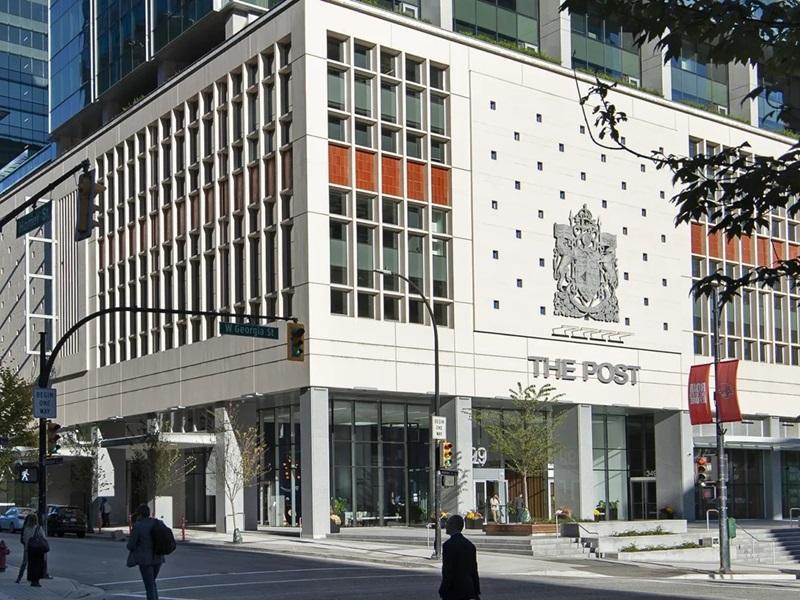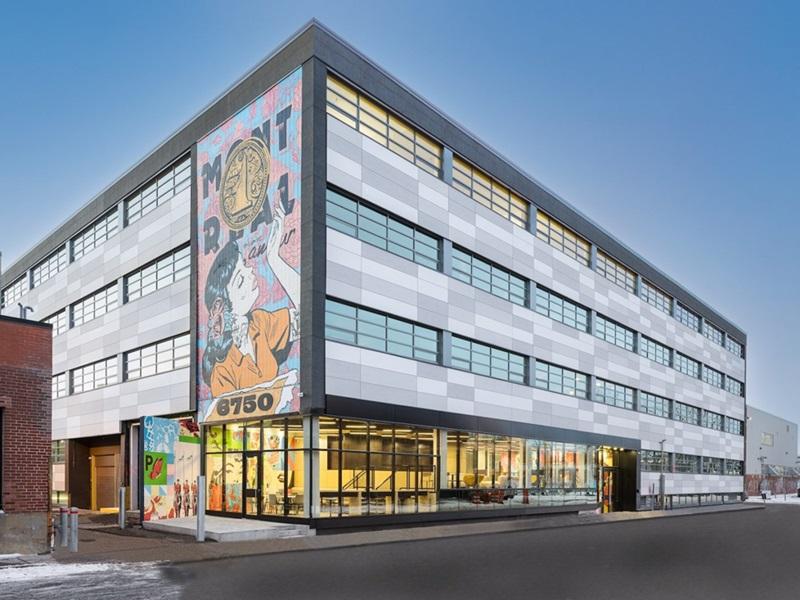
The Fairmont Chateau Lake Louise hotel in Banff. (Courtesy Avison Young)
Hotel transaction volume in Canada’s six largest markets was $712 million in 2021, Avison Young reports. That’s up 124 per cent over a very slow 2020 and also exceeds the 2019 total – prior to the onset of the COVID-19 pandemic.
A number of hotel transactions were deferred or collapsed during the early stages of the pandemic due to the uncertainty it created, but last year’s activity brought some optimism business will continue to pick up.
There were 92 hotel deals with an average value of $7.7 million last year compared to 75 with an average value of $9.6 million in 2018, when $726 million in property changed hands.
“Traditionally, the majority of hotel transactions that do occur are smaller, but they stand out more (in 2021) simply because there were so few larger transactions of $25 million-plus that occurred,” Avison Young principal and Canadian hospitality lead Curtis Gallagher told RENX.
Hotels sold for other purposes
“The majority of the transactions were change of use. Towards the end of 2021 there were some more traditional hotel transactions that were starting to take shape, and I suspect that trend will continue into 2022 barring any unanticipated lockdowns or travel restrictions happening from this point forward.”
Gallagher said 60 per cent of 2021 hotel transactions were for an alternative use, which is uncommonly high.
“There’s always change-of-use deals in any market, whether it’s from hotel to student housing or hotel to seniors. If there’s a market shift or new supply, or if something becomes functionally obsolete as a hotel, it can perhaps be adaptively reused as something else.
“Where there was a real jump, and where it stood out because there were fewer transactions, was for government acquisitions for housing.
“That grew and I think there will continue to be those types of deals, but they won’t be dominant simply because other transactions will start to occur this year, next year and into 2024.”
Hotel performance by market
The Greater Toronto and Hamilton Area was the most active market, accounting for 53 per cent of 2021 hotel sales. Calgary had 14 per cent, Montreal 12 per cent, Ottawa 11 per cent, Edmonton seven per cent and Vancouver three per cent.
Canada’s largest markets have attractions such as sports, entertainment, dining, nightlife and shopping that Gallagher expects to give their hotels a boost if the economy is opened up and they’re operating at or near full capacity.

Curtis Gallagher is principal, Canadian hospitality lead with Avison Young. (Courtesy Avison Young)
“These major urban centres are built to have demand across all seasons,” said Gallagher. “But if the business doesn’t come back when you rely on it, then it’s going to be a struggle.”
The national occupancy level reached 65.6 per cent and revenue per available room (RevPAR) was $106.22 in August, the highest since October 2019.
Vancouver experienced the strongest performance metrics, with a 48 per cent occupancy, $156.35 average daily rate (ADR) and $77.65 RevPAR. Montreal posted the lowest occupancy at 33 per cent, while Edmonton reported the lowest ADR and RevPAR figures with $103.80 and $37.16 respectively.
Toronto experienced the largest percentage improvement in occupancy at 42.1 per cent year over year, while Vancouver posted the strongest increases in ADR at 16 per cent and RevPAR at 52 per cent.
Edmonton and Ottawa were the only cities to experience declines in ADR from 2020, at minus three and minus one per cent respectively, but also had respective 22 and 20 per cent increases in RevPAR.
Gallagher believes ADR and RevPAR numbers in all Canadian major markets will be higher this year than in 2021. He thinks Calgary and Edmonton might perform surprisingly well owing to increases in oil and gas prices.
Hotel performance by class
Upper mid-scale hotels experienced the strongest occupancy at 45.8 per cent. Luxury hotels posted the highest ADR and RevPAR at $305.08 and $101.75 respectively, but had the lowest occupancy at 31.6 per cent.
Economy hotels posted the lowest ADR and RevPAR at $97.29 and $43.36 respectively.
Compared with the 2020 averages, upscale experienced the largest increase in occupancy at 33.2 per cent, while luxury reported the biggest leaps in ADR at 19 per cent and RevPAR at 38 per cent.
Gallagher believes resort hotels will continue to perform well this year, as people will either be looking for a relaxing break or have grown accustomed to working remotely and can mix business with pleasure and recreational activities at resorts.
Biggest Canadian hotel deals of 2021
Though it wasn’t included in Avison Young’s transaction statistics because it was outside of the six major markets, the biggest transaction of 2021 was Freed Hotels & Resorts’ $330-million deal that included acquiring a portfolio of Ontario resorts from Skyline Investments Inc.
Banff Lodging Company also purchased Rundlestone Lodge in Banff, Alta. for $27.61 million from Irwin’s Mountain Inn.
Other major hotel deals, according to Avison Young, were:
– Northland Properties Corporation’s $74-million acquisition of QUBE Hotel Toronto from Greenland Group;
– Courtyard per Marriott Aeroport de Montreal’s $69.6-million acquisition of 6600-7000 Robert-Jones Place in Saint-Laurent, Que. from Hotel Cavendish Limited Partnership;
– 161 Laurier Properties GP Inc.’s $44-million acquisition of Ottawa’s The Carleton Suite Hotel from Gillin Engineering and Construction;
– Sunray Group’s $25.4-million acquisition of Toronto East Inn from Trillyan Investment Limited;
– the City of Toronto’s $22.25-million acquisition of Super 8 by Wyndham Downtown Toronto from Toronto 8 Hotel Inc.;
– and Brigil Construction Inc.’s $21.8-million purchase of Four Points by Sheraton Hotel et Centre de Conferences in Gatineau, Que. from Four Points by Sheraton Hotel et Centre de conferences Gatineau-Ottawa.
Valuations and the lending community
Hotel valuations haven’t changed much because there haven’t been a lot of transactions over the past two years.
“If things start to recover and there’s no real distress in the market, I think valuations will come off a bit, but I don’t think it will be a dramatic decline,” said Gallagher.
The lending community remains cautious about the hospitality sector, though a few lenders have remained active. Gallagher noted Canada Western Bank as an example of one that has continued to support the hotel industry.
“A lot of the credit unions fell away and didn’t continue,” said Gallagher. “They maintained their current clientele but you really had to have a compelling story for them to take on new clients through the period.
“As a result, there really wasn’t a lot of transaction activity because if financing isn’t there it makes it very difficult to transact. The lenders will start to come back once their allocations get settled and they get more confidence in the industry.
“There’s a great opportunity for new lenders to come into the hotel space. A financial crisis, SARS and now this situation have occurred, and we’ve really seen little distress. The industry is somewhat resilient to these declines.”
The Avison Young report notes these factors could also impact hotel performance and valuations this year:
– the anticipated rise in interest rates;
– inflation due to continued supply chain issues and increased consumer demand;
– inventive government stimulus programs, such as the Ontario “staycation” tax credit;
– the impact of depleted hotel capital reserve accounts;
– owners’ ability to fund operating shortfalls in the absence of government support programs;
– creative use of indoor and outdoor space to capture new revenue sources; and
– the pace of event and group booking activity.
Government support programs for hotels
Gallagher said government support programs allowed hotels to stay open and break even or suffer smaller losses during the pandemic.
“Through COVID, with the government’s support of the industry and the patience of lenders, there was very little distress in the market,” said Gallagher. “As a result of that, no one needed to do anything.
“Everyone kind of sat on their hands and if there was an expectation on the sell side, it was high, and on the buy side it was low. There was a significant gap between the bid and ask of buyers and sellers, so nothing really transacted.”
If a recovery occurs, Gallagher expects that gap to narrow and more transactions to occur.
Several government programs are supporting the hospitality sector, such as the Tourism and Hospitality Recovery Program for organizations with more than 50 per cent of eligible revenue coming from tourism, hospitality, arts, entertainment or recreation activities.
Other programs include the Hardest-Hit Business Recovery Program wage subsidy, the Canada Recovery Hiring Program and the Canada Emergency Wage Subsidy, which are to expire by May 7.
Gallagher believes the summer should provide a leisure demand boost to hotels, and that business travel should start picking up in the fall. He hopes business travel will build through 2023 to a more normalized 2024.
Hotel staff shortages
Employment in accommodation and food services fell 20.8 per cent from 2019 to 2021, the greatest decline of any sector, according to Statistics Canada. Hotel owners reported staff either moved to other industries with more secure employment or that it made more financial sense for some workers to continue collecting government aid.
Gallagher said hotel operators need creative ways to deal with staff shortages, which could involve such things as cleaning rooms less often and reducing restaurant hours. The biggest issue, however, could revolve around employee payment and treatment.
“You’re going to have to demonstrate that you can offer people a career that gives them advancement and not just continuous minimum wage opportunities,” said Gallagher.











